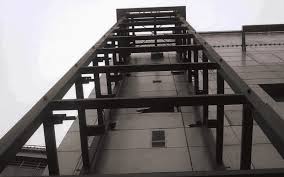The Cost of Neglecting Routine Household Chores in the U.S.

Let’s face it, life gets busy. And sometimes, small home tasks get pushed aside. You might ignore a leaky faucet, a messy gutter, or a dirty air filter. It doesn’t seem like a big deal at the time. But those little things can turn into big problems if you wait too long.
That’s why it’s smart to explore preventative home maintenance plans. These plans help you stay ahead of problems and avoid big repair bills later. You don’t have to do everything yourself. With the right plan, experts handle the work on a regular schedule.
Now let’s break down what happens when you ignore routine chores and how a little planning can save you money and stress.
Small Chores Can Lead to Big Costs
You may not notice it at first, but skipping small tasks adds up. Here’s how:
- A clogged gutter can overflow and damage your roof.
- A dirty air filter makes your heater or AC work harder. That raises your bills and wears out the system.
- A leaky pipe under the sink can rot wood and grow mold.
- Not trimming tree branches can lead to storm damage.
Fixing these problems later costs much more than preventing them now.
Why Do People Delay Household Chores?
It’s not always laziness. People skip chores for many reasons:
- They don’t have time.
- They forget.
- They don’t notice the problem.
- They feel too tired or stressed.
- They don’t know who to call for help.
That’s where preventative home maintenance plans make a difference. They set a routine. They help you avoid last-minute rush and high costs.
What Happens When You Ignore Seasonal Tasks?
Every season comes with chores. If you don’t prepare your home, things break down faster.
In Winter – If you forget to seal windows or clean heating vents, your energy bill goes up. Frozen pipes can burst.
In Spring – If you don’t check the roof or clean the yard, water can leak inside or pests can nest outside.
In Summer – If you skip AC service or yard care, your cooling system might stop working during a heatwave.
In Fall – If you don’t clean gutters or inspect your furnace, you may face blockages or fire hazards.
Each season brings risks. But they’re easy to manage if you take small steps on time.
Real-Life Examples of the Cost
Let’s look at a few real numbers:
- A new roof can cost $7,000 or more. But cleaning your gutters twice a year costs around $300.
- A burst pipe can cause $5,000 in damage. Fixing a small leak early might cost just $150.
- A broken AC in summer can cost $4,000 to replace. A yearly tune-up might be $100.
Waiting too long turns simple problems into expensive ones.
Why Preventative Plans Save Money?
A good maintenance plan works like a safety net. It keeps your home running smoothly. You don’t need to remember every task, because it’s all scheduled.
Here’s what you get with a plan:
- Regular checkups for plumbing, heating, and cooling
- Gutter cleaning and roof checks
- Appliance inspections
- Minor repairs before they turn into big ones
- Easy access to trusted service providers
With a plan, problems are caught early. That means lower bills and fewer headaches.
Save Time and Energy
Doing everything yourself takes time and effort. You need tools, skills, and motivation. Not everyone has that. Hiring someone for every job is also tiring and costly.
But a preventative home maintenance plan brings it all together. You get:
- A checklist of tasks handled for you
- Peace of mind knowing your home is safe
- More free time for things you enjoy
You can relax while others take care of the work.
How to Choose the Right Plan?
Not all plans are the same. Look for one that fits your home, your budget, and your needs. Ask these simple questions:
- What chores are included in the plan?
- How often will they visit?
- Is emergency help included?
- Are the service workers trained and insured?
- Can I change or cancel the plan if needed?
Start small. You can always add more services later.
Where to Find Good Plans?
You can find preventative home maintenance plans through local service companies or online platforms. Some big home service companies now offer bundled plans.
You can also ask friends or neighbors for recommendations. Look at reviews, check ratings, and make sure the company is reliable. A little research goes a long way.
Don’t Wait Until Something Breaks
Most people only call for help when something goes wrong. But by then, it’s already too late and expensive. Instead, take action early. Regular care keeps your home in better shape. It also keeps your family safer and your wallet happier. The best time to fix a problem is before it happens. That’s the power of prevention.
Final Thoughts
Ignoring small chores may seem harmless now. But over time, they turn into big, costly problems. And they bring stress, mess, and even danger. You don’t have to handle it all on your own. With preventative home maintenance plans, you stay ahead of trouble. These plans save money, time, and energy. So take the first step today. Make a list of things you’ve been putting off. Then check out plans that match your needs. A little effort now means fewer problems later. Your home deserves care. And you deserve peace of mind.


